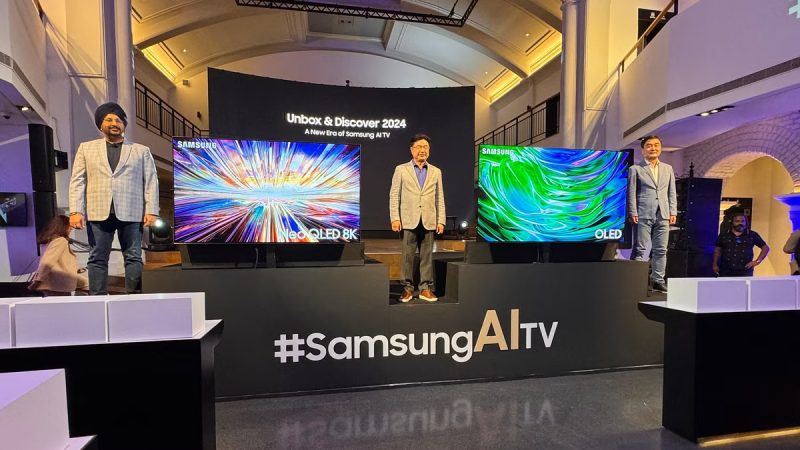Samsung is the most recent company to introduce electronics and home appliances with AI capabilities to the Indian consumer market.
The South Korean tech giant unveiled its newest range of state-of-the-art smart TVs, including its flagship OLED 4K and Neo QLED 8K models, which come with the NQ8 AI Gen3 processor, which offers on-device AI capabilities for audio enhancement and image upscaling.
With these cutting-edge TVs, Samsung is taking a stab at on-device generative AI technology. They were first shown at the Unbox and Discover 2024 launch event in Bengaluru. AI-powered home entertainment gadgets are a new trend that begins with this.
Powered by TizenOS, the Neo QLED 8K series is a significant advancement from Samsung, featuring cloud gaming, an educational hub, and smart yoga features that can be accessed by connecting the TV to an AI-enabled yoga mat.
With two variants (QN900D and QN800D) and sizes (65 to 85 inches), the Neo QLED 8K series accommodates a wide range of consumer preferences. The entry-level 65-inch variant is priced at Rs 3,199,90.
For those who pre-order the Neo QLED 8K, Neo QLED 4K, or glare-free OLED models before April 30, 2024, Samsung sweetens the pot for early adopters by providing free soundbars or substitute options like the Freestyle or Music Frame.
The company’s dedication to enhancing the home entertainment experience through AI integration was emphasized by JB Park, President and CEO of Samsung Southwest Asia. “We’ve incorporated artificial intelligence (AI) into home entertainment to provide our customers with outstanding viewing experiences.” He stated, “With the power of AI, our 2024 collection of Neo QLED 8K, Neo QLED 4K, and OLED TVs redefines the home entertainment experience and offers innovations across accessibility, sustainability, and enhanced security.”
New AI technologies like AI Picture Technology, AI Upscaling Pro, and AI Sound Technology are introduced by the Neo QLED 48, which has the NQ8 AI Gen3 processor with 512 neural networks.
In the meantime, the Neo QLED 4K and OLED TVs, which are equipped with the NQ4 AI Gen2 Processor from the previous generation, provide a rich feature set designed to satisfy a variety of customer needs.
The Neo QLED 4K series has five sizes ranging from 55 to 98 inches and starts at Rs 1,39,990. It is available in models QN85D and QN90D.
Conversely, Samsung’s OLED TV, which starts at Rs 1,64,990, comes in sizes ranging from 55 to 83 inches and features glare-free technology. It is available in models S95D and S90D.

